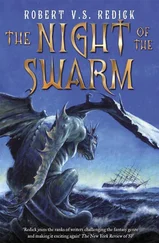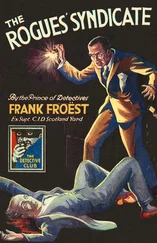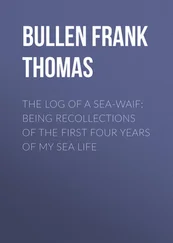'Don't worry,' said Roscovitz. 'They'll let us out pretty quickly. It's coming back in that takes time.'
The steel flaps juddered into motion. As the enormous metal panels moved apart, the view opened up to show the dark, featureless expanse of the depths. The Deepflight sank into the unknown.
Roscovitz accelerated and banked round. The boat turned onto its side. Anawak was enthralled. He'd driven conventional submersibles designed for use in the upper layers of the ocean, but this was different. The Deepflight handled the water like a sports plane. And it was fast! In a car, fourteen miles per hour- the equivalent of twelve knots – would seem slow, but underwater the Deepflight was displaying an amazing burst of speed. He watched in fascination as they emerged from beneath the Independence and the rippling surface of the water came into view overhead. Roscovitz dipped the nose of the submersible at a precipitous angle. He banked round again, headed towards the stern of the helicopter-carrier and dived back under. Above them, the enormous rudder blade of the vessel whizzed by.
Then Roscovitz banked sharply. Anawak kept expecting to see the round black-and-white face of an orca appear before them, but instead two dolphins peered in. With cameras on their heads, they pranced jauntily around the submersible.
'Smile, Leon!' laughed Roscovitz. 'You're on camera!'
Then a light flashed on. 'You're taking over,' said Roscovitz. 'If anything comes along and tries to eat us, we'll give it a brace of torpedoes for breakfast. But I'll take care of that. You focus on steering.'
Anawak was momentarily flummoxed. His grip on the joystick tightened. Roscovitz hadn't told him what to do, so he headed straight on.
'Hey, Leon, no snoozing at the wheel. I've been on bus journeys that were more exciting than this.'
'What do you want me to do?'
'Anything. Fly us to the moon!'
The moon in this scenario must be below us, thought Anawak. Here goes.
He thrust the joystick forward.
The Deepflight's nose jerked down and they headed into the depths. Anawak stared into the darkness. He pulled the joystick towards him, this time more gently. The boat straightened. He tried a curve, but turned too sharply. He tried another. He knew he was steering too jerkily, but really it was easy. It was all a question of practice.
Ahead he spotted a second Deepflight. Suddenly he started to enjoy himself He could have carried on for hours.
'Not bad, Leon. I reckon your technique's enough to make anyone travel-sick, but that's nothing we can't fix. Now put her on the horizontal. Excellent. That's it, drift along slowly. Now let's have a go at operating the articulated arms. There's nothing to it.'
After five minutes Roscovitz took over the controls and guided the boat slowly into the shaft. There was an agonising minute inside the sluice, but then the glass flaps opened and they surfaced. Anawak wasn't sorry to be back: the early-morning visit from the orcas had unnerved him. And there were all the other surprises that the sea might spring on an unsuspecting pilot.
Roscovitz opened the pods, they lifted themselves out of the boat and jumped on to the jetty.
Floyd Anderson was waiting for them. 'How was it?' he asked. He didn't seem to care.
'Fun.'
'Well, folks, the party's over.' The first officer watched the second boat surface. 'As soon as you guys stick your heads under water, stuff happens. We've picked up a signal.'
'What?' Crowe joined them. 'What kind?'
'We were hoping you could tell us.' Anderson stared straight past her. 'It's loud, and it's coming from somewhere nearby.'
COMBAT INFORMATION CENTER
'A low-frequency signal,' said Shankar. 'Same pattern as Scratch.'
Shankar and Crowe had rushed to the CIC. In the meantime they'd received confirmation from the onshore station. According to their calculations, the noise was coming from the vicinity of the Independence .
Li walked in. 'Can you make any sense of it?'
'Not right away.' Crowe shook her head. 'We'll need some help from the computer. We'll get it to break down the signal and start looking for patterns.'
'Call me some time next year.'
'Is there a problem?' Shankar growled.
'I was just wondering how you intended to decipher it in a viable timescale, when your guys at NOAA have been puzzling over Scratch for years.'
'And you're asking that now ?
'Come on, children.' Crowe scrabbled around for her cigarettes and lit up. 'I keep telling you that communicating with an alien species is an entirely different matter. Yesterday's signal was probably the first human message that the yrr have been able to decode. They'll reply in a similar format.'
'You really think they'll use the same coding?'
'Well, if the yrr exist, if this is a message, if they understood our code, and if they're interested in talking to us – then, yes, I do.'
'Why are they using the infrasound spectrum and not a frequency we can hear?'
'Why shouldn't they use infrasound?' Crowe asked, surprised.
'You'd think it would be diplomatic.'
'If a Russian were to address you in bad English, would you reply to him in Russian?'
Li shrugged. 'OK, whatever. But what now?'
'We'll stop transmitting our message. That'll signal to them that we've picked up their transmission. We'll know soon enough if they've been using our code. They'll have tried to make it easy to decipher. Whether we're smart enough to grasp what they're telling us is another matter.'
JOINT INTELLIGENCE CENTER
Weaver was attempting the impossible. She was trying to disregard all the existing research about the evolution of intelligent life – and, at the same time, confirm its findings.
Crowe had explained that every theory on the existence of alien civilisations hinged on the same set of questions, including: how big or small could intelligent life-forms be? In SETI circles, where the focus was on interstellar communication, people were busy hypothesising about beings whose gaze was turned towards the skies – extra-terrestrials who had entertained the possibility of other worlds and had decided to make contact. Such beings would almost certainly live on dry land, so there were clear limitations governing their size.
Astronomers and exobiologists had recently come to believe that a planet would have to possess no less than 85 per cent and no more than 133 per cent of the Earth's mass to generate surface temperatures conducive to the development of intelligent life within one to two billion years. The dimensions of this hypothetical planet had implications for its gravitational field, which in turn allowed certain conclusions to be drawn about the anatomy of any beings that might live there. Theoretically a living creature could grow infinitely large on an Earthlike planet. In practice, though, it would be limited by the ability of the body to bear its own weight. Dinosaurs, of course, had developed extraordinarily large bones, but their brains had failed to keep up. They were designed for lumbering, eating and not much else. Accordingly, there was a rough rule of thumb: intelligent non-stationary life-forms were unlikely to grow more than ten metres tall.
The more interesting question was how small they could be. Could ants develop intelligence? And how about bacteria? Or viruses?
SETI researchers and exobiologists had good reason to want to find out: it was almost certain that the Earth's corner of the galaxy was free from other humanoid civilisations, at least within its own solar system, which left scientists clinging to the hope that Mars or one of Jupiter's moons would be home to a few stray spores or some single-cell organisms. They started to search for the smallest viable unit of life, which inevitably led them to complex organic molecules – the smallest self-contained units capable of storing and using information. But could a molecule like that develop intelligence?
Читать дальше












